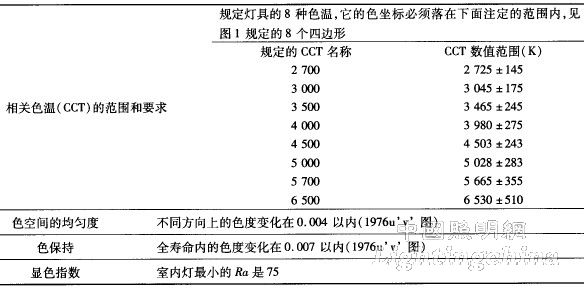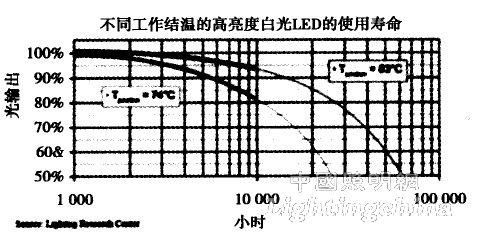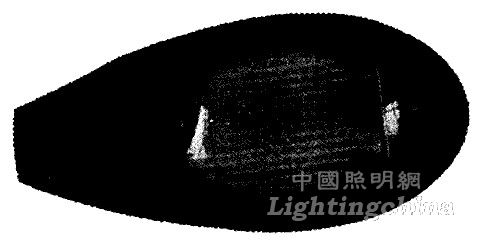0 Preface
Energy ranks first in the world's most concerned issues in the 21st century, and lighting energy efficiency is ranked as the top priority. Road lighting is controlled by the government. In response to the trend of energy conservation and environmental protection, the business opportunities of D-lamps are constantly heating up. From the point of view of lighting, the road is divided into four categories: automobile-specific, general street, shopping street, and sidewalk. Generally speaking, road lighting refers to car-specific road lighting. The main function is to ensure that pedestrians and vehicle drivers at night roads can pass safely. In particular, drivers should be provided to see the shape of the road, the direction of travel and the surrounding environment to correctly identify Any obstacles that predict the direction of travel. Road lighting plays a very important role in reducing accidents and crime.
Due to the importance of road lighting, the design considerations include sufficient illumination, uniform brightness, pleasant light color, low glare, induced driving, energy saving and convenient maintenance. Therefore, street lamps should have high efficiency, good lighting utilization and proper light distribution. Long life, waterproof and dustproof, etc., to achieve safety, reliability, energy saving, visual mode, low light damage and low maintenance rate.
LED is regarded as the light of the 21st century. LED lighting is like vacuum tube to transistor, and CRT to FPD. It is a revolutionary breakthrough. After 2007, LED luminous efficiency is continuously improved. 1W cold white light product light efficiency is 110 lm/W, Nichia. The laboratory level of the small crystal ratio (20mA) is even 249 lm/W, and a large amount of investment has brought about an amazing growth rate. The 2008 Beijing Olympic Games also declared the coming of the LED lighting era. Before replacing indoor lighting, the most popular aspect of cutting people is the design of LED light source applied to street lighting modules. With a long-lasting life of over 5000Oh, it can significantly reduce future maintenance costs and reduce power consumption by 30%-50%. In addition, the excellent controllability of the LED street lamp can be fully utilized, such as the initial illumination adjustment, the time-controlled illumination setting, and the automatic dimming, etc., which can add another 10% to the road energy-saving benefit. At present, the system efficiency of white LEDs for lighting under normal lighting working conditions has exceeded 401m/W, and the manufacturing cost of LEDs has dropped drastically. Therefore, white LEDs for lighting have commercial conditions applied to some lighting fields. However, the current industrial groups that manufacture lighting LEDs often do not understand the basic knowledge and requirements of lighting appliances, and the traditional lighting lighting production groups often lack deep understanding of the LED characteristics of lighting, and do not fully utilize LED features in design and operation. To carry out the strengths and avoid weaknesses, resulting in many unreasonable designs.
1 About LED street light
1.1 Road lighting regulations and standards
Road lighting requirements are strict, road lighting setting specifications and street lamp performance standards are fairly complete and clear in the world; standards generally include illuminance and uniformity (minimum illuminance / average illuminance), CIE115 proposes reference specifications, dividing roads into four categories, pavement benchmarks It is 15, 20, 30, 501x ​​with a uniformity of 0.4. Based on the influence of environmental and cultural factors, there are still gaps in national norms. The safety, performance and energy efficiency characteristics of road lighting fixtures are important aspects for evaluating the quality of road lighting fixtures. The relevant product standards include product safety standards, product performance standards and photometric test method standards. Segmented Product Safety Standard: GB 7000. 1 -2007 "Lighting Part 1: General Requirements and Tests" (idt IEC60598 -1 : 2002) and GB7000.5 -2005 "Safety Requirements for Road and Street Lighting" (idt IEC60598 - 2 -3:2003) Performance Standards for Segmented Products: GB/T24827-2009 "Performance Requirements for Road and Street Lighting", Photometric Test Method Standard: GB/T9468-2008 "General Requirements for Luminous Distribution Photometric Measurement", the standard The test method is consistent with CIE121. Lamps that use LED light sources in sections, in addition to the above two standards, shall also comply with the safety of GB7247.1-2001 laser products Part 1: Equipment classification, requirements and user guides (idt IEC 60825 -1: 1993). Regarding the detection of D-lights, IECEE has OSM/CTL resolution. The principle is that for four-D lamps, the type should first be judged according to IEC60825-1. If it is a Class 1 or 1M laser-safe LED, it is not required to IEC60825-1 test, otherwise required. The luminosity of the luminaire is specified by the CIE (International Commission on Illumination) publication, covering the glare and uniformity of CIE 31 -1978 road lighting, depreciation and maintenance of CIE33 -1977 road lighting, CIE 34 -1977 road lighting and installation data: luminosity Determination, classification and performance, CIE 47 -1977 Road lighting in humid environments, CIE 66 -1984 Road surface and materials, CIE 140 -2000 road lighting calculation, CIE 180 -2007 Road transport lighting in developing countries.
Lighting requirements for roads/street lights (from CJJ45-2006 standard), road lighting regulations for CJJ45-2006 in Table 1, and luminosity indicators for different roads from road lighting requirements, if roads are mainly for motor vehicles The road surface should be evaluated by brightness. For example, the illuminance should be used as the main service object for pedestrians and non-motor vehicles. Since the pedestrian cares about the face of the other person and the situation on the ground, it is necessary to determine the illuminance of the vertical surface or the illuminance on the road surface (horizontal illumination).
Table 1 Regulations for road lighting on the CJJ45-2006 standard

Under the premise of energy saving, Japan sets the reference standard for street lighting fixtures. The energy efficiency part is bounded by 200w lighting fixtures. The luminous efficiency below 200W is 50lm/W, and the rest is higher than 60lm/W. Power density (LPD, W/m2) is included in the regulations, and this policy will accelerate the popularity of high-efficiency lamps and is also an opportunity for LED street lamps.
Taiwan actively promoted the development of LED lighting regulations, and officially announced the CNS15233 "Light-emitting diode road lighting" standard on December 4, 2008. Emphasis on energy saving, durability, safety, light distribution performance, etc., three levels of energy efficiency, minimum luminous efficiency of 451m / W, followed by continuous testing 360h under 50 °. Safety is focused on avoiding lightning damage and wind strength. The distribution of light intensity is mainly regulated on the light distribution, and the product must ensure the uniformity of the road illumination to ensure the safety of passers-by. The specification mainly includes basic performance (power factor, input power, current harmonic distortion and voltage variation), safety (insulation withstand voltage, IP, wind pressure), electromagnetic interference, optical characteristics (light color allowable color shift range, light distribution) ), luminous efficiency, durability reliability (temperature cycle and switch 8000 times), durability, etc. In addition, based on visual moderation, no LED is allowed to light or flicker. The most demanding standard is that after the aging test is required for 100Oh, in the 3000h test, the luminous flux should not be less than 92% of the original luminous flux, and the luminous efficiency is 90% of the original standard.
DOE's requirements for road lighting in the ENERGY STAR certification of SSL products, DOE announced the first batch of SSL product ENERGY STAR certification requirements in August 2007 (a total of 7 products, 3 outdoor and 4 indoors) In August 2008, the requirements for supplementary products including road/street lighting technical requirements were announced (a total of 10 products, 5 outdoor and 5 indoors). The technical requirements for road/street lighting are as follows (including technical requirements common to the first batch of products):
(1) Requirements for chromaticity and color change, the color specifications are shown in Table 2. The SSL product meets the requirements of the chromaticity coordinates required by ENERGY STAR. There is no limit to the color temperature of road/street luminaires in the DOE SSL specification.
Table 2 Rules for chromaticity, color change and color

Figure 1 The representation of the color temperature position in the chromaticity diagram


Figure 2 LED light decay and junction temperature curve
(2) Life (light fading) requires two grades of 2500Oh and 3500Oh. The detection method is to illuminate the SSL lamp after 6000 hours, and the lamp does not need to be aging. The measurement is performed every 1000h. The light decay to 600Oh is less than the initial 94.1%, the life is more than 35000h, and the light decay is 91.8%. The life expectancy is 25000h.
(3) Electrical requirements, Table 3 is the electrical requirements for SSL lamps.
Table 3 Electrical requirements for SSL lamps

(4) Energy efficiency requirements: The energy efficiency of the lamp is ≥50lm/W.
(5) Minimum light output required for light distribution: 23001m (initial); lumen density: 0°~90° is 100%, luminous flux is 80°~90°, maximum 10% luminous flux; beam uniformity requires maximum light intensity At 55 ° - 65 ° and so on.
(6) Other content is the exception that the standby power consumption requirement does not consume electricity when not working, but it is used together with the monitoring equipment that detects the presence of personnel; it is guaranteed to replace the replacement light source or driver for free for three years from the date of purchase. The date of guarantee shall be calculated from the date of transportation; the luminaire manufacturing shall be accompanied by the description of the thermal management of the luminaire, the certificate file and the test procedure; the minimum required lumen of the LED light source to decay to 70% of the initial value is 35000h; attached to the building SSL devices with a power greater than 13W must be equipped with a light control device that can be automatically turned on and off, and can be manually or automatically controlled within 24 hours.
1. 2 LED street light status
(1) Compared with traditional road lighting fixtures, LED street lamps are commonly used as high-voltage uranium lamps or metal halide lamps. The biggest feature is that the arc-emitting arc tube is small in size, has a large light output, and has high light. Efficiency, system efficiency (including supporting electrical appliances) can reach 80 -110 lm / W, but this kind of light source is used in road lamps, only about 40% of the light directly passes through the glass cover to reach the road surface, and other light passes through the lamp reflector and then emits the lamp . Traditional street lamps have obvious deficiencies. First, the illumination in the direction of direct illumination of the lamps is very high, and the over-illumination is obvious. The secondary roads can reach 50 lx or more. Second, the efficiency of the reflectors is 50%-60%, and the light output of about 60% is In the luminaire, after losing 30% -40%, the technology is shot on the road. The overall efficiency of such luminaires is 60-70% (very few international brands have efficiencies of up to 80%). The comprehensive effective lighting efficiency is only 50%. At present, the lighting effect (illuminance and uniformity) of the secondary trunk road can hardly meet the requirements of CJJ45-2006 and CIE31, CIE115 standards. LED as a street light source, it has many advantages compared with the traditional street light source, long life, good seismic performance, white LED light color is better than high-pressure lamp, can achieve a perfect dimming function (LED is frequently switched on it is not too big The effect can be dimmed by changing the current method, or the pulse width adjustment method can be used for dimming, and the LED luminous intensity can be effectively adjusted by adjusting the voltage duty ratio and the operating frequency), and the luminous flux loss of the LED light source in the optical system of the lamp is the smallest, LED The light source does not contain harmful metal records.
(2) Current status of road light fixtures with LED light sources. At present, there are two main types of LEDs used in street lamps: one uses traditional road lamp housings, but only the matrix LEDs mounted on the flat panel mounting surface; The class integrates multiple LEDs on a cylinder, the light output density is close to that of a high-intensity gas discharge lamp, and then the illuminator reflector is used for light distribution, but the design of the luminaire distribution is not superior to the traditional road lamps, and in one The integration of high-density LEDs in a small area makes the LED heat dissipation poor, which not only affects the luminous efficiency of the LED, but also affects the service life of the LED. The LED street lamp modified by the traditional street lamp head adopts the aluminum profile as the radiator, and the whole light source and the driving circuit are incorporated into the aluminum alloy lamp shell. Although the protection level of the lamp is solved, the whole light source is in the sealed lamp housing. The heat element method generated in the work of the lamp is emitted into the air, which causes the LED module and the drive circuit to work in a very harsh environment, the working temperature rises sharply, and the LED has a dead light and a light decay as the temperature rises, the driver It is also burnt due to high temperature, which greatly reduces the reliability and service life of the luminaire (see Figure 2). Therefore, this program is not mature. To make LED street lights, it is not feasible to simply install LED light sources with traditional lamp heads, as shown in Figure 3.

Figure 3 Traditional street light converted into LED street light
At present, LED street lights cannot be used for trunk roads. The main road is a trunk road connecting the main sections of the city, and is separated by a motor vehicle and a non-motor vehicle. The speed of the motor vehicle on the main road is faster than that of the secondary road, and the lighting level is higher than that of the secondary road. The illuminance requirement of the main road is up to 30 lx, the illuminance uniformity is 0.4, the average brightness requirement is 2.0 cd/m2, the total brightness uniformity is 0.4, the brightness longitudinal uniformity is 0.7, and the threshold increment is ≤10. Street lamps that meet the energy-saving level should have the lighting quality above the above requirements, and the lighting power density should be less than the national standard. When the number of lanes is ≥6, the lighting power density is 1.05W/m2, and the number of lanes is <6. The illumination power density is 1.25 W/m2. Most of the main roads use 250W or 400W high-pressure uranium lamp street lamps. The luminous flux of 250W or 400W high-pressure nano lamps reaches 28000lm (250 W) and 48000 lm (400 W). The luminaire efficiency of such high-power street lamps is generally between 75% and 85%. Therefore, the luminous flux output of the lamps is also at least 2100 Olm. Taking a 250W high-voltage lamp street lamp as an example, the lamp efficiency is 83.5%, and the light distribution curve is as shown in Fig. 4(a). The maximum light intensity is 10° C angle and 70.0° γ angle. The shape of the light distribution curve in which c is 0°, 180°, and 10° is good. This street light can be used on the main road of four to six lanes. At present, the small luminous flux is the main reason why LED street lights cannot be applied to the main road. Luminaires with different luminous flux grades should be applied to different levels of roads, otherwise energy saving effects will not be achieved.

Figure 4 LED light distribution
(3) LED light source road lamp driving status, LED drive circuit requirements are to ensure the characteristics of constant current output, because the relative change region of the junction voltage is small when the LED is working forward, so the LED drive current is guaranteed to be basically guaranteed. The LED output power is constant. Due to the unstable supply voltage supply in China, it is necessary to have a constant current output characteristic of the driving circuit of the road lighting LED to ensure the light output while avoiding the super power operation of the LED. At present, a large part of the first type of driving circuit is composed of buck, rectification and filtering, DC constant current traveling, and circuit; the other type is composed of a general-purpose switching power supply plus a resistance circuit, which consumes a large amount of active power. Therefore, the two types of driving circuits are not efficient under the premise of basically satisfying the characteristics of constant current output. In addition, a large part does not have lightning protection.
